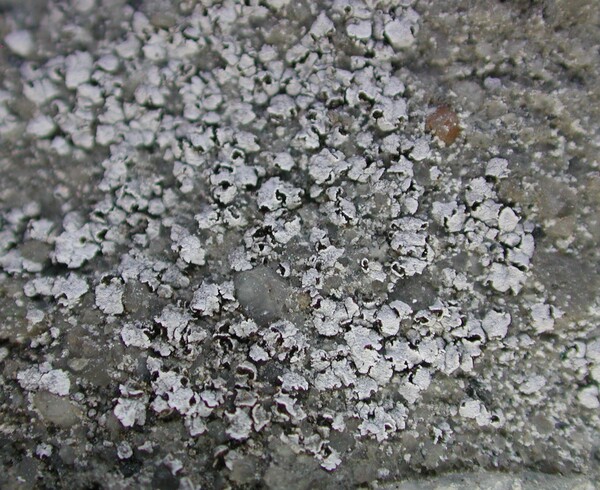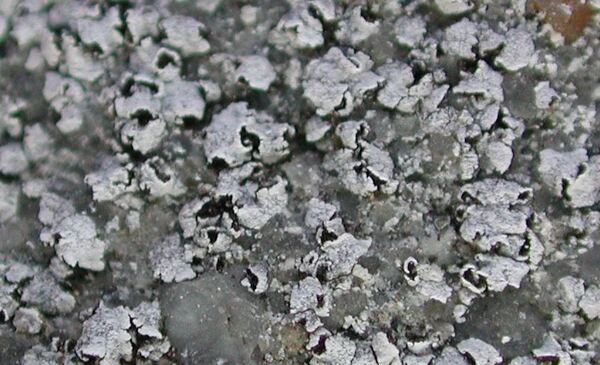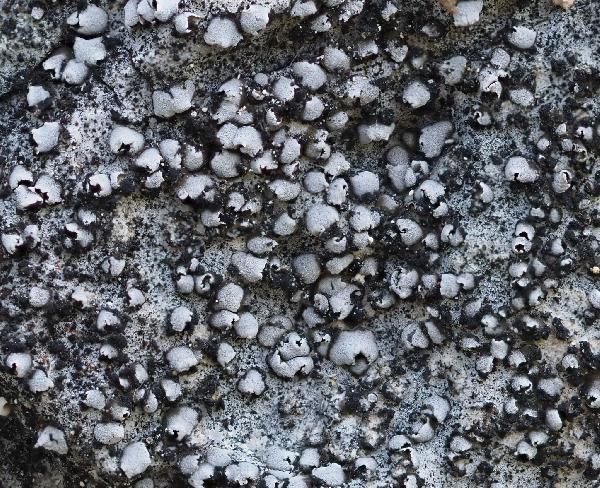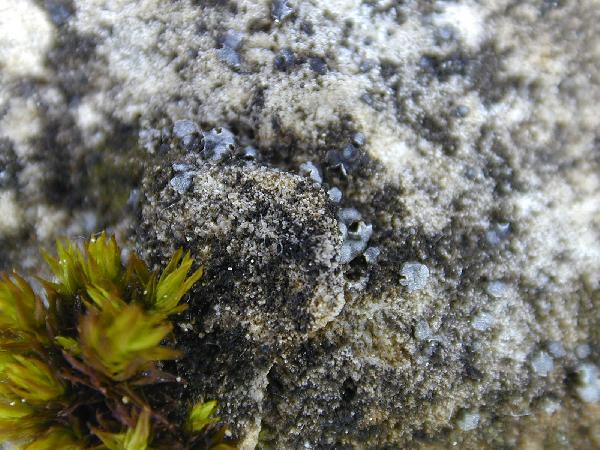Acarospora moenium (Vain.) Räsänen
Lich. Fenn. Exs.: 306, 1936. Basionym: Endocarpon moenium Vain. - Acta Soc. Fauna. Fl. Fenn., 49, 2: 83, 1921.
Synonyms: Aspicilia excavata G. Thor & Timdal; Aspicilia moenium (Vain.) G. Thor & Timdal
Distribution: N - VG (!), Frl, TAA (Thor & Nascimbene 2007, Nascimbene & al. 2022), Lomb (Zhurbenko 2008).
Description: Thallus of dispersed, peltate, concave, 0.2-0.7(-1) mm wide squamules, the upper surface densely white-pruinose, turning pale brown to grey where rubbed, the margins raised, bearing excavate soralia, the soredia black, granular, 18-24 μm wide, encrusting the lower surface and sometimes also the underlying rock, in this case resembling a crust of cyanobacteria. Apothecia extremely rare, innate in the centre of squamules, with a concave, brown, pruinose disc. Paraphyses moniliform, the apical cells 2-4 µm wide. Ascospores not known. Photobiont chlorococcoid. Spot tests: K-, C-, KC-, P-, UV-. Chemistry: without lichen substances.
Note: a mainly temperate, inconspicuous lichen, certainly more widespread in Northern Italy on steeply inclined faces of man-made substrata (mortar, concrete, etc.), more rarely on calciferous schists; very much overlooked. For further details see Nordin & al. (2009). The record from Venezia Giulia is from the wall of a private house in the village of S. Lorenzo near Trieste (vidi sed non legi!).
Growth form: Squamulose
Substrata: rocks
Photobiont: green algae other than Trentepohlia
Reproductive strategy: mainly asexual, by soredia, or soredia-like structures (e.g. blastidia)
Pioneer species
Commonnes-rarity: (info)
Alpine belt: absent
Subalpine belt: absent
Oromediterranean belt: absent
Montane belt: very rare
Submediterranean belt: very rare
Padanian area: absent
Humid submediterranean belt: absent
Humid mediterranean belt: absent
Dry mediterranean belt: absent

Predictive model
Herbarium samples


P.L. Nimis; Owner: Department of Life Sciences, University of Trieste
Herbarium: TSB (10560)
2001/11/22
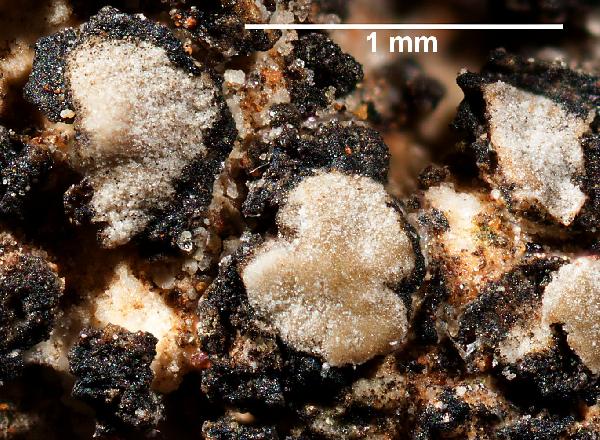
Ulrich Kirschbaum CC BY-SA 4.0 - Source: https://www.thm.de/lse/ulrich-kirschbaum/flechtenbilder
On devonian calcareous rocks.Central Europe; Germany: Hesse.(Collected by U. Windisch).

Ulrich Kirschbaum CC BY-SA 4.0 - Source: https://www.thm.de/lse/ulrich-kirschbaum/flechtenbilder
On concrete walls.Central Europe; Germany: Hesse.
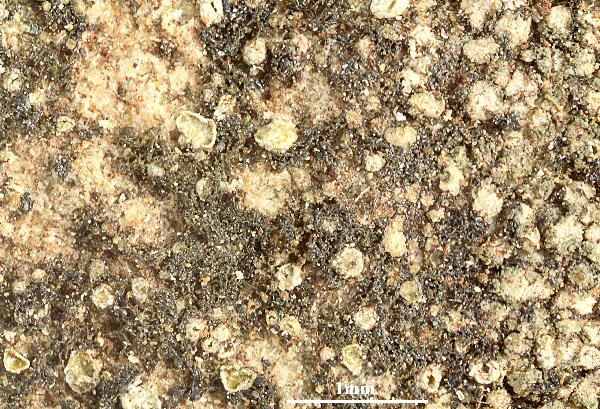

Felix Schumm - CC BY-SA 4.0
[ABL79252], Brazil, Rio Grande do Sul, Agudo, Cascata Raddatz, in
Atlantic rain forest on overhanging siliceous rock. 29°35'12'' S,
53°10'49'' W, 250 m. Leg. A. Aptroot (no 79252), 15 July 2019, det. A.
Aptroot 2019.
Growth form: Squamulose
Substrata: rocks
Photobiont: green algae other than Trentepohlia
Reproductive strategy: mainly asexual, by soredia, or soredia-like structures (e.g. blastidia)
Pioneer species
Commonnes-rarity: (info)
Alpine belt: absent
Subalpine belt: absent
Oromediterranean belt: absent
Montane belt: very rare
Submediterranean belt: very rare
Padanian area: absent
Humid submediterranean belt: absent
Humid mediterranean belt: absent
Dry mediterranean belt: absent

Predictive model
| Herbarium samples |


P.L. Nimis; Owner: Department of Life Sciences, University of Trieste
Herbarium: TSB (10560)
2001/11/22

Ulrich Kirschbaum CC BY-SA 4.0 - Source: https://www.thm.de/lse/ulrich-kirschbaum/flechtenbilder
On devonian calcareous rocks.Central Europe; Germany: Hesse.(Collected by U. Windisch).

Ulrich Kirschbaum CC BY-SA 4.0 - Source: https://www.thm.de/lse/ulrich-kirschbaum/flechtenbilder
On concrete walls.Central Europe; Germany: Hesse.


 INDEX FUNGORUM
INDEX FUNGORUM
 GBIF
GBIF
 DOLICHENS
DOLICHENS


